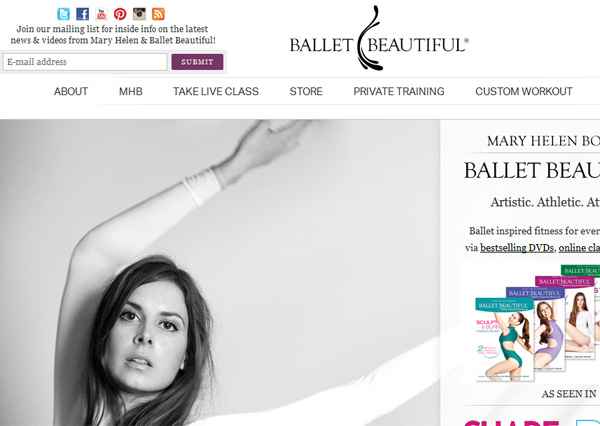 Mary Helen Bowers is the ballerina behind Ballet Beautiful, a dance-inspired workout that she teaches to Victoria’s Secret supermodels helping them attain those trademark tight abdominals and lean legs through the carefully crafted dance-inspired workout moves. Bowers is a former dancer who joined the New York City Ballet in her teens and became a prima ballerina, passing this knowledge onto the models with a ballet-inspired workout that sculpts swan-like arms and tones abdominals for the revealing lingerie.
Mary Helen Bowers is the ballerina behind Ballet Beautiful, a dance-inspired workout that she teaches to Victoria’s Secret supermodels helping them attain those trademark tight abdominals and lean legs through the carefully crafted dance-inspired workout moves. Bowers is a former dancer who joined the New York City Ballet in her teens and became a prima ballerina, passing this knowledge onto the models with a ballet-inspired workout that sculpts swan-like arms and tones abdominals for the revealing lingerie.
Bowers often trains with the models backstage at runway shows, as well as on-site: for the most of the year she trains the models three or four days a week, depending on what is going on their schedule and if there’s a big photo shoot. Most of the sessions are a one-hour workout, but the schedule increases to longer sessions before a big event, such as the annual Victoria’s Secret Fashion Show.
The movements in Ballet Beautiful combine modified fitness positions and resistance work with classical ballet moves that target the muscles dancers use, for example Bowers swaps thigh-building gym squats in favour of thigh-slimming ballet basics like the Grand Plié. Another move that targets “ballet muscles” – inner thighs and the buttocks – can be achieved by placing both shins on a mat with one hand on a chair and drawing the opposite knee out to the side in a modified arabesque.
Bowers’ client list isn’t just limited to Victoria’s Secret models; she also instructed actress Natalie Portman for her Oscar-winning role in “Black Swan”. Bowers had to turn to online sessions and bring in extra backup to free up her time to coach Portman for the grueling role in 2010. Following the release of “Black Swan,” Bowers hired professional dancers to teach Ballet Beautiful private lessons to handle the demand.

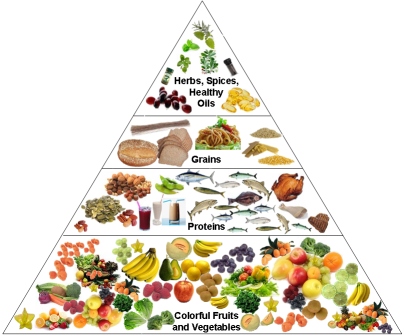 Following injuries, it is paramount that dancers recover as quickly as possible, and diet can particularly aid this. And it’s not just about what you eat, it’s about what you shouldn’t eat too; junk food fills holes without providing any nutrients, just empty calories, and caffeine reduces bone-mineral density and increase fluid loss.
Following injuries, it is paramount that dancers recover as quickly as possible, and diet can particularly aid this. And it’s not just about what you eat, it’s about what you shouldn’t eat too; junk food fills holes without providing any nutrients, just empty calories, and caffeine reduces bone-mineral density and increase fluid loss.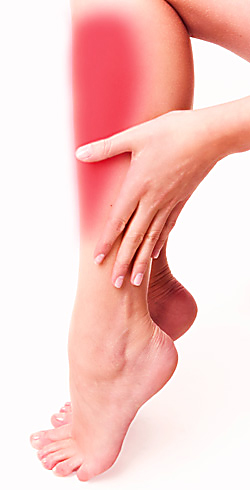 With injuries perhaps the most feared aspect of a performer’s life, it is important that your diet is aiding recovery, aside from other treatments you may be using such as ice, physiotherapy and rest. Ensuring you are providing your body with good nutrition will reduce recovery times, which is paramount for getting back in the studio. It is said that there are three key nutrients to get you back on top form.
With injuries perhaps the most feared aspect of a performer’s life, it is important that your diet is aiding recovery, aside from other treatments you may be using such as ice, physiotherapy and rest. Ensuring you are providing your body with good nutrition will reduce recovery times, which is paramount for getting back in the studio. It is said that there are three key nutrients to get you back on top form.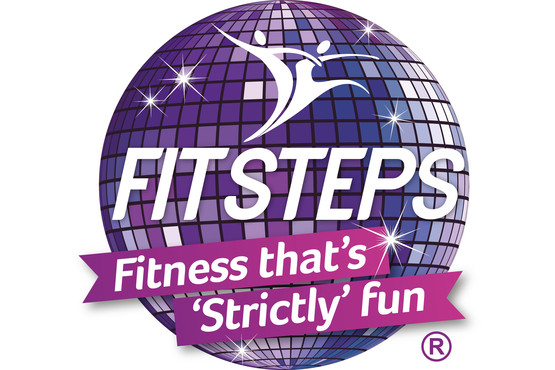 A Bristol fitness instructor and diet adviser Sarah Buscemi has added a new Strictly-themed exercise regime to her usual repertoire to enable clients to dance their way to fitness with a new Strictly-themed workout programme. Sarah has joined other Rosemary Conley consultants around the country to train in FitSteps, which was launched earlier this year by Strictly stars Natalie Lowe and Ian Waite.
A Bristol fitness instructor and diet adviser Sarah Buscemi has added a new Strictly-themed exercise regime to her usual repertoire to enable clients to dance their way to fitness with a new Strictly-themed workout programme. Sarah has joined other Rosemary Conley consultants around the country to train in FitSteps, which was launched earlier this year by Strictly stars Natalie Lowe and Ian Waite.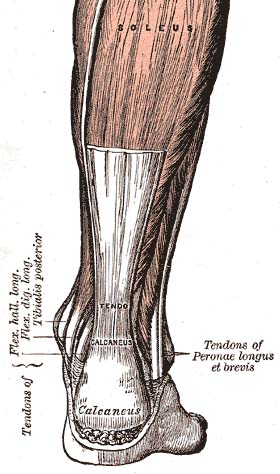 Historically, the term ‘Achilles Heel’ referred to the greatest weakness of an individual: Achilles was a figure of Greek Mythology, a hero of the Trojan War killed by a small injury to his heel. Today, following this tale, the Achilles is the small tendon connecting the calf muscle to the heel bone. The tendon is still a weakness for many dancers, most notable recently was the snapping of the tendon of a Bolshoi dancer during a performance. This was a result of tendonosis, a chronic and more serious condition where bouts of tendonitis are not treated properly or the dancer does not take adequate time to rest.
Historically, the term ‘Achilles Heel’ referred to the greatest weakness of an individual: Achilles was a figure of Greek Mythology, a hero of the Trojan War killed by a small injury to his heel. Today, following this tale, the Achilles is the small tendon connecting the calf muscle to the heel bone. The tendon is still a weakness for many dancers, most notable recently was the snapping of the tendon of a Bolshoi dancer during a performance. This was a result of tendonosis, a chronic and more serious condition where bouts of tendonitis are not treated properly or the dancer does not take adequate time to rest. The University of Chichester, renowned for its dance course, is holding a day of talks, workshops and performances on 9 November, named Moving and Experiencing: Somatics in theory and practice.
The University of Chichester, renowned for its dance course, is holding a day of talks, workshops and performances on 9 November, named Moving and Experiencing: Somatics in theory and practice.